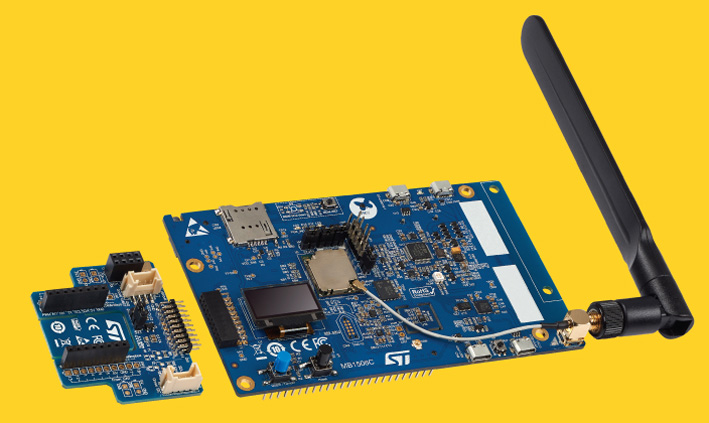STM and Murata develop cellular IoT kit
- April 14, 2021
- Steve Rogerson

Swiss electronics firm ST Microelectronics and Murata have developed a cellular IoT discovery kit that contains an eSIM with bootstrap profile for immediate connection.
The B-L462E-Cell1 discovery kit brings together hardware and software building blocks, including GSMA-certified embedded SIM (eSIM) to develop power-conscious cellular IoT devices quickly that connect to the internet through LTE-Cat M and NB-IoT networks. It is suitable for embedded developers and IoT evangelists, and affordable for OEM and mass-market users.
The kit uses a small all-in-one cellular module from Japanese firm Murata, which embeds STM’s low-power STM32L462 microcontroller, ST4SIM-200M GSMA-certified eSIM, and an LTE-M and NB-IoT chipset. The eSIM is pre-programmed with a bootstrap connectivity profile from Truphone, an STM authorised partner.
The kit leverages out-of-the-box data connectivity and enables remote SIM provisioning and SIM over-the-air updates. The user can immediately start the board by connecting to a power supply using a USB cable or inserting three AAA batteries in the connector provided before activating the eSIM to let the board connect to a cellular network to begin developing the application.
It is designed to resist cellular connectivity attacks thanks to the ST4SIM-200M eSIM based on the ST33 Arm Securcore SC300 secure element, which is CC EAL5+ and GSMA SGP.02 v3.2 certified. The ST4SIM is ready to host a root-of-trust applet for protection against cyber attacks.
On-board sensors simplify development of motion- and environmental monitoring. They comprise STM’s LSM303AGR accelerometer-magnetometer, HTS221 relative humidity and temperature sensor, and LPS22HH pressure sensor. There is also a 2.4cm OLED display, indicator LEDs and a USB connection.
The STM32Cube software expansion package, X-Cube-Cellular, drives the discovery kit and supports the Berkeley (BSD) sockets API. BSD’s standardised function calls for internet communication let users connect their prototypes to the internet without needing to develop an AT-command driver to control the modem. X-Cube-Cellular includes a demonstration application and cellular framework in source code, and is easily imported and configured using the free STM32Cube software toolset.
With STM’s low-power technologies in the STM32L4, which draws about 2µA in Stop 2 mode, and a cellular chipset drawing less than 1.4µA in power saving mode, the discovery kit provides a platform to develop equipment with battery life of up to ten years for smart-city, smart-industry, smart-agriculture, smart-metering and wearable applications. The ST4SIM-200M is manufactured and personalised at the firm’s GSMA-accredited sites and, with the programmed eSIM profile, eases connection to networks in more than 160 countries.
“Cellular connectivity will take a significant share of the IoT market and is why STM has teamed with Murata on a module powered by STM32L4 and embedded ST4SIM eSIM,” said Hakim Jaafar from ST Microelectronics. “For the best out-of-the-box experience, STM has also worked closely with Truphone on a free-of-charge LTE-M connectivity data plan to allow IoT cellular discovery kit users to quickly develop and prototype their solutions.”
Yong Fang, cellular IoT product manager for Murata in the Americas, added: “This announcement underscores the importance of our collaboration with ST Microelectronics. By doing so, we developed a solution that addresses two of the major pain points cellular IoT device developers face – software development and cellular certification. This module also delivers class-leading optimisation and flexibility in a highly integrated package to enable global connectivity.”





